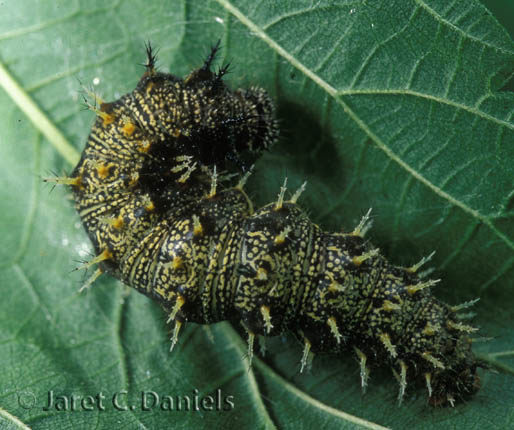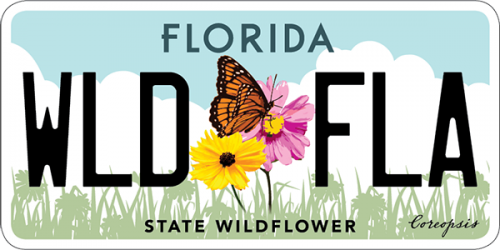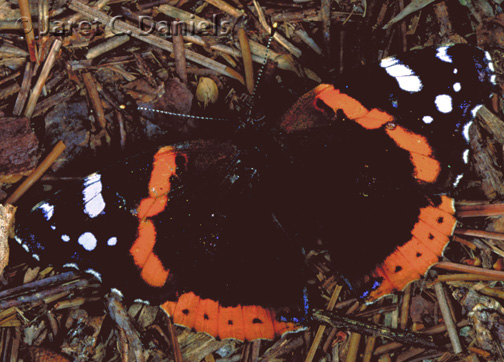- Family name: Nymphalidae/Brush-Footed Butterflies
- General description: Black; forewing with red median band a white subapical spots; hindwing with broad red marginal band; ventral hindwing mottled black, brown, blue and cream
- Field Marks: Black with red forewing band and red hindwing margin
- Sexes: Appear similar
- Wingspan: 58-76 mm
- Life Cycle: Egg: Small, green, laid singly on host leaves Mature larva: Black with fine white mottling, a lateral band of white spots, and numerous black branched spines Chrysalis: Gray-brown
- Number of Generations: Two or three generations

- Flight Season: Spring through fall
- Abundance: Common
- Habitat: Forest margins, woodland openings, swamps, stream margins
- Larval Host Plants: Pellitory (Parietaria floridana), Stinging Nettle (Urtica urens), False Nettle (Boehmeria cylindrica)
- Similar Species: No similar species
- Additional Information: Larvae construct individual shelters on host by weaving leaves together with silk.
- Range in Florida
 The Florida Wildflowers & Butterflies projects at the Florida Museum are sponsored in part by the State of Florida and the Florida Wildflower Foundation, Inc.
The Florida Wildflowers & Butterflies projects at the Florida Museum are sponsored in part by the State of Florida and the Florida Wildflower Foundation, Inc.
